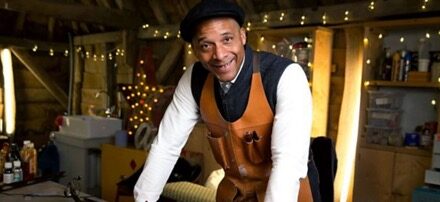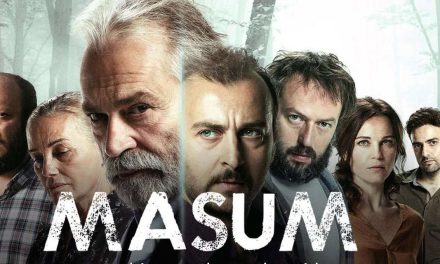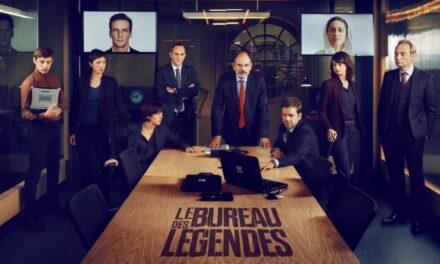NB- Post may contain spoilers regarding Game of Thrones Season 4
Over the past few weeks, CST Online has seen a number of posts discussing the nature (I might say, ethos) of television studies. The question has been addressed from multiple perspectives; blog posts by Elke Weissmann, Catherine Johnson, Jason Jacobs, and Christine Geraghty, as well as the comments they generated, explored a variety of possible approaches to television, from discussions of the pedagogical dimension to questions of television aesthetics to the problem of the special emphasis on the programme texts in both teaching and research. I wouldn’t necessarily want to replicate those arguments, but, in the light of these recent discussions, it seems that the problem of textuality, its conceptualization and its apparent persistence in both production and reception, remains central to the ways television criticism positions itself. In the following I would like to raise some further questions about the concept of textuality by looking at an example of practice where its presence, although seemingly exterior to the viewing experience proper, still remains an integral component of what might be called the multi-modality of television broadly defined.
The incidents that occasioned these thoughts were the accidental (and therefore uncanny) juxtaposition of the much-anticipated death of the character of King Joffrey Baratheon in Episode 2 of Season 4 of the Game of Thrones (originally aired on HBO on 13th April 2014), and the viewing on YouTube of a talk Jack Gleeson gave on celebrity culture at the Oxford Union Society.
The way these two, only remotely related programmes come to inform one another should be considered neither paradigmatic nor definitive. But it is precisely the incalculability of the flow inherent in the textuality, more precisely, discursivity, I am about to address that, at least to some extent, warrants for the examination of these observations.
Beyond doubt, until his graphically portrayed departure from the storyline, Joffrey Baratheon had been one of the most controversial, but at the same time, most emblematic, memorable, and most intriguingly crafted characters of the series. Over the course of the first three seasons, he emerged as a perfectly unpredictable super-villain, the anatomical example of a tyrant, a monster that, as Tony Magistrale and Michael A. Morrison enigmatically describe, we are both fascinated with and repulsed by (4). Like the manipulations of his Machiavellian grandfather Tywin Lannister (Charles Dance), or the intrigues of his mother Cersei (Lena Headey), Joffrey’s actions were a constant source of suspense for the series. Indeed, Game of Thrones has frequently (and, I might add, somewhat affectionately) been described as a series the takes pleasure in unexpectedly killing off its main characters, thus constructing a narrative structure that capitalises on a gradually germinating desire for revenge on the audience’s part. Joffrey’s character is deliberately posited as the embodiment par excellence of the iconography of villainy. Born from an incestuous relationship, spoilt by his mother, and somewhat asexualised (we never see him approach his wife Sansa), he takes pleasure in torturing and humiliating others, especially Sansa Stark (Sophie Turner), by forcing her to look at her father’s head on a spike as a wedding gift, and his uncle Tyrion (Peter Dinklage), by destroying the gift Tyrion gives him at his wedding, and by making Tyrion cup bearer and pouring wine on top of his head. It comes as no surprise, then, that Joffrey’s death is mourned only by his mother, and that his demise turned out to be one of the most anticipated moments in the history of the series.
Indeed, the violent spectacularity of Joffrey’s death might serve as interesting material for a textual analysis as well, but it also provides an opportunity to take a closer look at the actor behind the King, and, in close connection to him, the specificity of the extension of (the concept of) textuality to the discourse on celebrity culture in today’s media-saturated environment. Since King Joffrey remains one of the many characters in Game of Thrones (along with his mother Cersei) whom the audience just loves to hate, the speech Gleeson gave at the Oxford Union Society inscribes itself precisely into the context of the audience’s engagement, thus extending the concept of textuality beyond the programme, to include what Christine Geraghty calls ‘paraphernalia’, that is, the celebrity status of the actors, and the paratexts the audience’s responses produce. The responses the video recording of the speech generated among the users of the file sharing portal where it was posted also indicates just how extensive the impact of the programme text is, and how much constructions of celebrity are predicated on the iconography the character in the programme.
In his heavily politicised speech, Gleeson not only discussed his character in the series, but, in an auto-reflexive manner, also formulated his critical stance towards his own status as a celebrity. Aimed at an academic audience, the talk read the celebrity phenomenon from a materialist / post-Marxist perspective. Gleeson explained that he refused to ‘act on’, that is, to take on the role of a celebrity, on the basis of his personal, subjective, immediate experiences with celebrity culture. However, it is not so much the contents of Gleeson’s speech that requires attention, but rather the paratextual dimension of the responses it generated. His self-theorizing discourse triggered a sequence of extremely controversial comments following the video. As was to be expected, only a few commentators actually engaged with Gleeson’s ideas, and most of the participants just used the platform to express their personal take on the character’s death in the series: a part of the ‘audience’ admittedly couldn’t get past their aversions towards the character of Joffrey, and projected their disapproval, sometimes even desire for revenge, onto the actor’s ideas; some accused Gleeson of being hypocritical about a system (institution and ideology) that made him who he is; some others acknowledged their somewhat schizophrenic attitude where they hate Joffrey but love Gleeson – precisely because his performance makes the character so repulsive; again some others appreciated the self-reflective, critical theorizing of his own status and his own subjectivity in relation to this phenomenon. It is peculiar to observe how Joffrey-the-character’s death determined the ‘reading’ of Gleeson-the-actor’s claim to withdraw from acting and thus position himself outside the celebrity status, and how these two instances conflated and reflected one another in the comments in an uncanny circularity. It was also interesting to observe how the source text (that is the video) got detached from the comment thread that turned into a narrative, a discourse in its own right, with the participants increasingly reflecting on each other.
This example seems to underline the specificity of both participatory culture – and the ability of media (television in particular) to shape the perception of subjectivity. Gleeson’s description of his public image as being ‘democratised by fans and institutions’ highlights the well-known phenomenon of the conflation of actor and character. It is the same drive that makes it impossible to ‘unsee’ Hermione Granger in Emma Watson, Hannibal Lecter in Sir Anthony Hopkins, or Gandalf AND Magneto in Sir Ian McKellen (as evidenced by the way the photoshopped image of McKellen’s T-shirt had gone viral on the Internet).

The artificially sustained proximity of actor and character is further enhanced by such paratextual programmes as Thronecast (Sky Atlantic, 2011-), which functions as an accompanying fan show to Game of Thrones, also featuring interviews in which the actors of the series comment upon previous episodes and interpret the actions, emotions and conflict of their own characters. It is perhaps not difficult to see the expansion of textuality in the proliferation of these contents on social networks and community portals, where they are constantly reproduced and circulated via sharing and commenting. Thus, phenomena (like the notion of celebrity, or forms and practices of participation) that register as extraneous to the programme text, as corollary to what I want to call ‘teletextuality’, are always already caught up in a (para)textual flow that the multi-modality of television itself helps to create.
As a consequence, the underlying question is this: what do we make of the multi-modalilty of television in the light of a textuality / discursivity that extends to multiple interconnected media and platforms? How does this expanded concept of discursivity inform the understanding of a constantly re-mediated subjectivity? And, inversely, how do we, in the light of all these complexities, negotiate the socio-cultural significance of television series? And, finally, what agencies (narrative, aesthetic, participatory) operate at the core of the multi-modality of television? It would be interesting to read what approaches or theorizations others might have to offer to this exciting discourse.
David Levente Palatinus holds a lectureship in Contemporary Literature and Culture at the University of Ruzomberok. He is currently a post-doctoral researcher at the Institute of Advanced Studies of the University of Bologna. He has published on forensic crime fiction, corporeality, the representation of the body, and violence and deconstruction. He is currently working on a booklength project called “The PathologEthics of Culture.”





